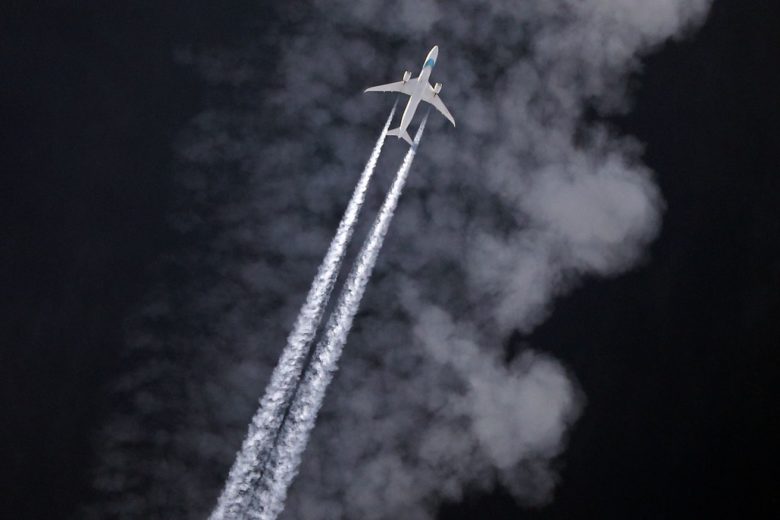Google has been working with American Airlines and Bill Gates’ climate investment fund, Breakthrough Energy, to chart more sustainable flight routes. The aim is to help pilots limit a flight’s impact on the climate by avoiding routes that create contrails, those white streaks in the sky that planes sometimes leave behind.
Google is helping pilots route flights to create fewer contrails, which is better for the climate
Contrails are a big problem for the planet because they trap heat, accounting for about 35 percent of aviation’s global warming impact. Using satellite imagery and AI, they developed a way to forecast where contrails are most likely to form. That could give pilots a chance to avoid them and minimize aviation’s environmental footprint in the process.
Contrary to what conspiracy theorists say, the streaks behind are not “chemtrails” but condensation trails. Contrails, for short, are basically human-made clouds. They form when water vapor condenses around soot or other particles a plane releases. Clouds are tricky when it comes to their impact on the climate. They can trap heat on the planet, but they can also have a cooling effect by reflecting some sunlight back into space. Unfortunately, with contrails, there’s more heating than cooling going on because there’s no sunlight to reflect at night.
To stop contrails from forming, planes can try to fly where there’s less humidity. That doesn’t mean veering off course; adjusting the altitude at which they’re flying can make a big difference. Pilots just need to be able to see where that humidity is to avoid it.
That’s where Google and Breakthrough’s new contrail forecast maps might come in handy. To develop the maps, the research team first had to pour through tens of thousands of satellite images to spot and label contrails. They used that data to train a computer vision model to detect contrails in satellite imagery. After adding more weather and flight data, the researchers eventually had a model for predicting when and where contrails might form.
“It’s just like a big map that’s saying, ‘Look, planes flying at this altitude will make a contrail. So let’s not fly any planes through there,’” Google software engineer Scott Geraedts said in a video the company released with a blog post yesterday.
American Airlines pilots tried the maps out with 70 test flights over six months. “It was very easy, very intuitive. We already change altitudes pretty often to avoid turbulence, so this is completely similar,” Deborah Hecker, a director of flight operations at American Airlines, said in the video.
The researchers compared satellite imagery of those test flights to others where pilots didn’t try to avoid contrails. They found that the test flights cut down contrails by 54 percent. That’s a promising sign that adjusting flight paths is one way the aviation industry can address climate change while less polluting planes and fuels are still being developed.
The test flights did burn through 2 percent more fuel by avoiding contrails. Across an airline’s entire fleet, the extra fuel doesn’t amount to much — about a 0.3 percent increase, according to Google, since only a small portion of flights would need to make adjustments to prevent contrails. The costs come out to $5 to $25 for a climate benefit equivalent to avoiding a ton of carbon dioxide emissions.
Google’s research has yet to be peer-reviewed, although the New York Times reports that the company submitted its research to a scientific journal. This was a small test, and American Airlines pointed out in a press release that there still needs to be more research to see if this can be done at a larger scale.
Don’t miss our latest industry news. Check out: Airbus 2023 orders continue with latest Wizz Air deal.
Source: https://www.theverge.com/

